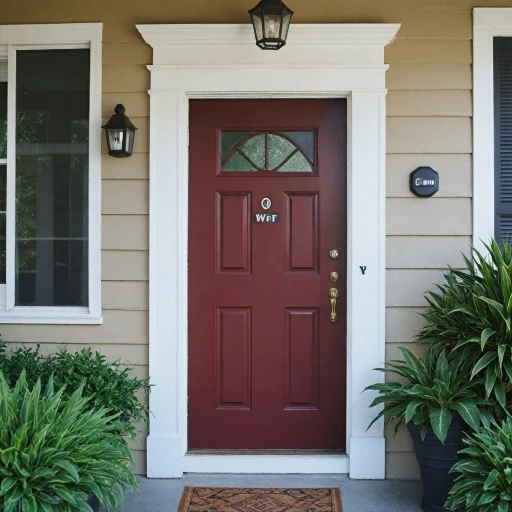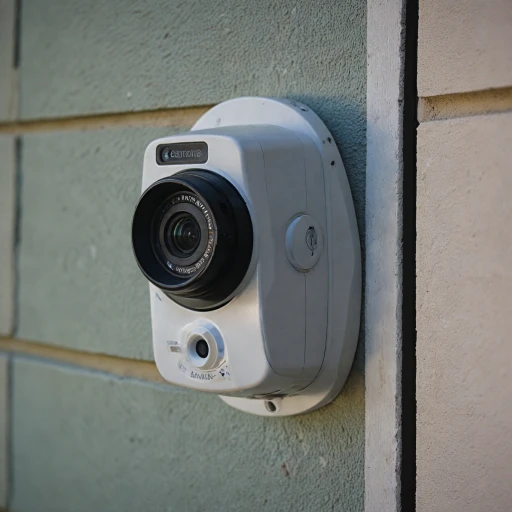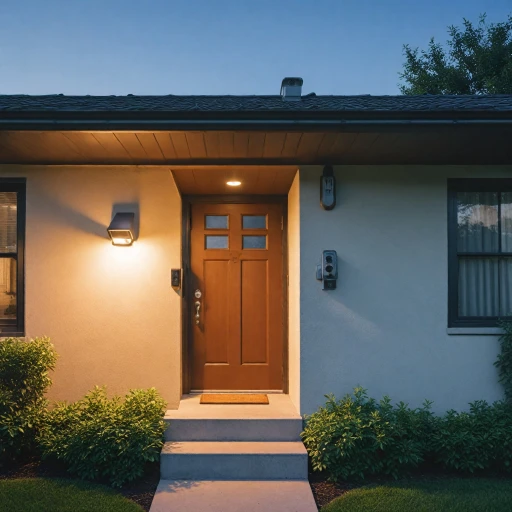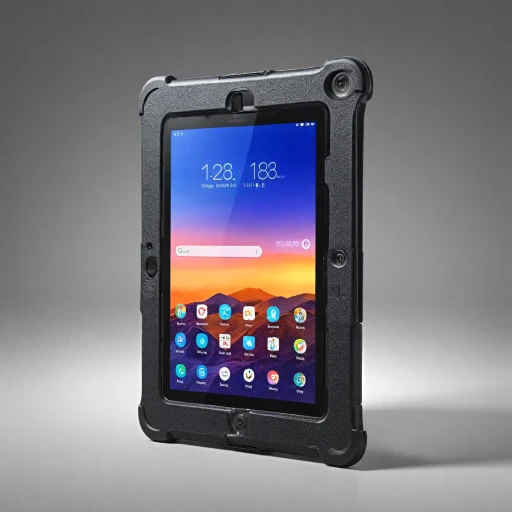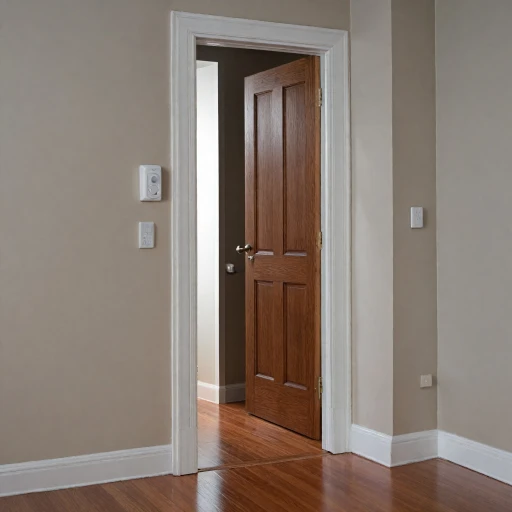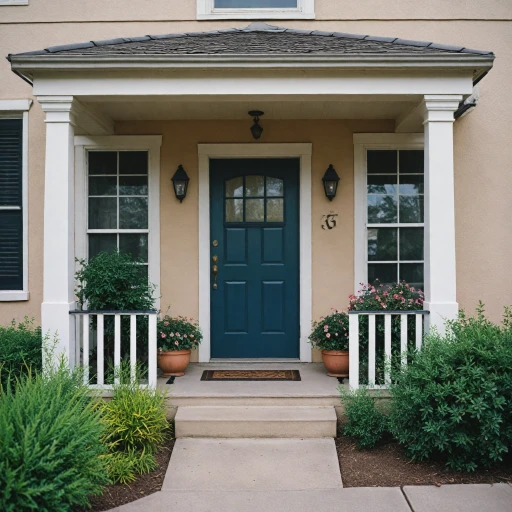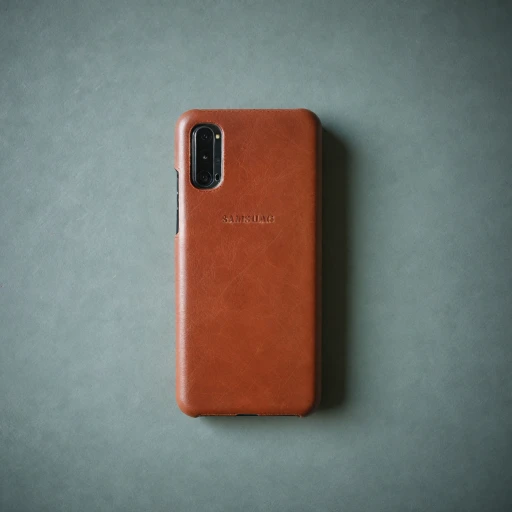Understanding Ring Cameras and Apple HomeKit
Getting to Know Ring Cameras and Apple HomeKit
To create a smart home environment that's both effective and efficient, understanding the technology behind your devices is essential. Ring cameras are a popular choice for many homes due to their robust security features and user-friendly nature. Coupled with Apple HomeKit, which is known for its seamless integration and comprehensive control of smart devices, they can elevate home security systems to a new level. Ring cameras come equipped with features that cater to various home security needs, including motion detection, high-definition video quality, and two-way audio communication, making them a versatile choice for monitoring your property. These cameras are designed to function well as standalone devices but can offer more enhanced features when integrated with a smart home system like Apple HomeKit. Apple HomeKit is a framework that allows users to configure, communicate with, and control smart-home appliances using Apple devices. HomeKit is valued for its strong security protocols and user-friendly interface, which provide a cohesive experience in managing various connected devices, including lights, thermostats, and indeed, security cameras. However, bringing Ring cameras into the Apple HomeKit ecosystem isn't straightforward due to compatibility issues. Users might encounter challenges in directly connecting these devices to HomeKit. Despite these compatibility issues, solutions and workarounds are available that can bridge the functional gap between Ring cameras and HomeKit. Addressing these challenges not only enhances convenience but also improves the overall security and privacy of your integrated smart home system. To further optimize your smart home, maximizing functionalities like personalized automation and seamless device integration can be achieved after the initial setup. Moreover, knowing how to tackle common technical issues ensures a smoother experience. Each of these elements is crucial to achieving a harmonious, connected home that leverages the best of both Ring and Apple technologies.Compatibility Challenges and Solutions
Overcoming Compatibility Hurdles
Integrating Ring Cameras with Apple HomeKit can enhance your smart home setup, but it’s not without its challenges. One of the primary issues is that Ring Cameras are not natively supported by HomeKit. This means users must find alternative solutions to bridge the gap between these two systems.
Third-Party Solutions
To achieve integration, many users turn to third-party applications like Homebridge. Homebridge acts as a bridge, allowing non-HomeKit devices to communicate with Apple’s ecosystem. While setting up Homebridge can be technical, it offers a viable solution for those determined to integrate their Ring Cameras with HomeKit.
Considerations for Compatibility
- Software Updates: Regularly updating both your Ring Camera firmware and HomeKit software is crucial to ensure smooth operation.
- Network Stability: A stable Wi-Fi connection is essential for seamless integration. Consider upgrading your router if you experience frequent connectivity issues.
- Device Limitations: Be aware of any limitations in functionality when using third-party solutions. Some features may not be fully supported.
While these compatibility challenges might seem daunting, the solutions discussed here pave the way for a more connected and efficient smart home. In the next section, we'll delve into a detailed guide on how to set up this integration effectively.
Step-by-Step Guide to Integration
Guide to Connecting Ring Cameras to Apple HomeKit
Embarking on the task of integrating your Ring Cameras with Apple HomeKit may seem challenging, but by following a structured approach, the process can be manageable and rewarding. Below, we break down the steps to ensure a smooth transition.
Initial Preparations
Before diving into the integration process, ensure that you have the necessary tools and software updates. It's crucial to have your Ring app and Apple Home app updated to the latest versions.
- Check Compatibility: Confirm that your Ring devices can interact with Apple HomeKit. This may require additional hardware or software updates to ensure seamless communication.
- Back Up Data: It's wise to back up any existing settings and configurations. This provides a safety net should you face any unexpected issues during the integration process.
Setting Up Homebridge
Apple does not natively support Ring Cameras, requiring a workaround like Homebridge, an open-source option that bridges the two ecosystems. Setting up Homebridge forms a crucial part of the integration process.
- Install Homebridge on a device that remains active, such as a Mac or Raspberry Pi.
- Add the Ring Plugin: Within Homebridge, locate and install the Ring plugin. This plugin facilitates communication between the HomeKit environment and Ring devices.
Configuring Apple Home App
Once Homebridge is operational, configuring the Apple Home app to recognize your Ring Cameras is the final step.
- Launch the Apple Home app and select “Add Accessory.”
- Choose your Ring Cameras and assign them to the appropriate rooms within the Home app. This can streamline device control and enhance user experience.
For more insights into smart home functionalities, exploring resources like smart home sensors can be beneficial.
By adhering to these steps, users can turn compatibility challenges into successful integrations, ultimately enhancing their smart home environment with the security and convenience of both Ring and Apple HomeKit systems.
Enhancing Security and Privacy
Boosting Home Security with Ring Cameras and HomeKit
Integrating Ring Cameras with Apple HomeKit can significantly enhance your home's security measures. By connecting these systems, you allow for a more comprehensive surveillance setup that can be managed effortlessly from your Apple devices. The seamless interoperability between these systems offers several benefits:- Centralized Control: Once integrated, you can control all your Ring Cameras using the Apple Home app. This means you can easily monitor live footage, receive notifications, and manage camera settings from one place.
- Automated Responses: Utilizing HomeKit's automation features, your Ring Cameras can be programmed to activate specific actions based on various triggers. For example, your camera lights can automatically turn on when motion is detected at night, providing an additional layer of security.
- Enhanced Alerts: With HomeKit, you can receive more refined alerts and notifications, which can be tailored according to your preferences—ensuring that only the most relevant information reaches you.
- Secured Access: The Apple HomeKit framework is designed with user privacy and security in mind. All communications between devices are encrypted, reducing the risk of any unauthorized access.
Maximizing Smart Home Functionality
Optimizing Your Smart Home with Integrated Devices
Integrating Ring cameras with Apple HomeKit can significantly enhance your smart home experience. By combining the functionalities of these devices, you can create a more efficient and responsive environment. Here are some ways to maximize the functionality of your smart home setup:
- Unified Control: Use the Apple Home app to manage all your smart devices, including Ring cameras, from a single interface. This centralization simplifies the process of monitoring and controlling your home environment.
- Automation: Set up automation routines that trigger actions based on specific conditions. For example, you can configure your lights to turn on automatically when your Ring camera detects motion at night.
- Voice Commands: Utilize Siri to control your Ring cameras and other connected devices hands-free. This feature is particularly useful when you need to manage your home while multitasking.
- Enhanced Notifications: Customize notifications to receive alerts only for specific events, reducing unnecessary interruptions while ensuring you stay informed about important activities.
- Energy Efficiency: Integrate smart plugs and thermostats with your system to optimize energy usage, automatically adjusting settings based on your presence or absence.
By leveraging these features, you can create a seamless and efficient smart home environment that not only enhances convenience but also improves security and energy management.
Troubleshooting Common Issues
Resolving Common Integration Issues
When integrating Ring Cameras with Apple HomeKit, users may encounter a few challenges. Here are some common issues and solutions to help you maintain a seamless smart home experience:
- Device Connectivity Problems: Ensure that both your Ring Camera and Apple HomeKit are connected to the same Wi-Fi network. Double-check your network settings and restart your router if necessary. A strong and stable internet connection is crucial for smooth operation.
- Incompatible Firmware: Regularly update the firmware of both your Ring Camera and Apple devices. This ensures compatibility and access to the latest features. Check the manufacturer's website or app for available updates.
- HomeKit Accessory Not Responding: If your Ring Camera is not responding in HomeKit, try removing and re-adding the device in the Home app. This often resolves connectivity issues. Follow the steps outlined in the integration guide to ensure proper setup.
- Limited Functionality: Some features may not be fully supported when integrating with HomeKit. Review the compatibility solutions to understand what functionalities are available and how to optimize them.
- Privacy Concerns: Adjust privacy settings in both the Ring and HomeKit apps to control data sharing and camera access. Refer to the section on enhancing security and privacy for detailed guidance.
By addressing these common issues, you can enjoy a more reliable and efficient integration of your Ring Cameras with Apple HomeKit, enhancing your overall smart home experience.


